
Première Vision And Its “A Better Way” | The Importance Of The Product Life Circle
If you don’t know Sorona, Umorfil or Amni Eco Soul, you don’t know anything about the future of sustainable fashion. We present to you the latest innovations we met at Première Vision this Summer edition.
Finding innovations in sustainable fabrics is not something that happens every six months (that only happens with fabrics for fast fashion). There is only one place where you can find out what’s new, what’s innovative, what’s sustainable. That’s Premiere Vision‘s eco-sustainability forum.
As every edition, we visit it to learn about the latest innovations in sustainable fabrics, technologies for sustainability and new platforms and companies that are born with the intention of ensuring a more sustainable future for fashion. This year, Première Vision has created “A Better Way” programme to ensure more transparent sourcing. Promising commitments on production site impact, traceability, product composition, social initiatives, end-of-life, and sustainability; the verified devotion classified honesty in the market. Regarding the undeniable shift in consumers and the industry in terms of fashion, “A Better Way” presented simplified guidance to buyers during their path to sustainability.
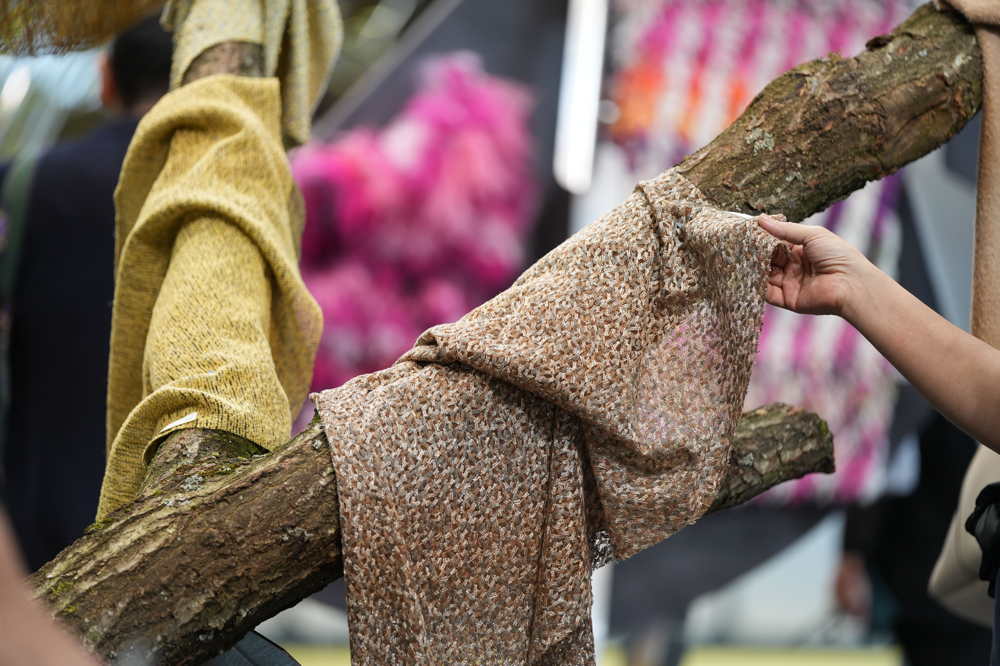
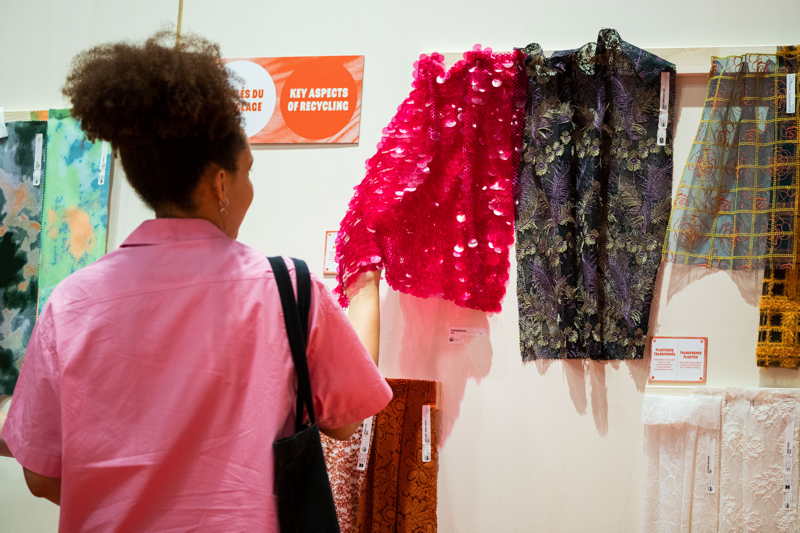
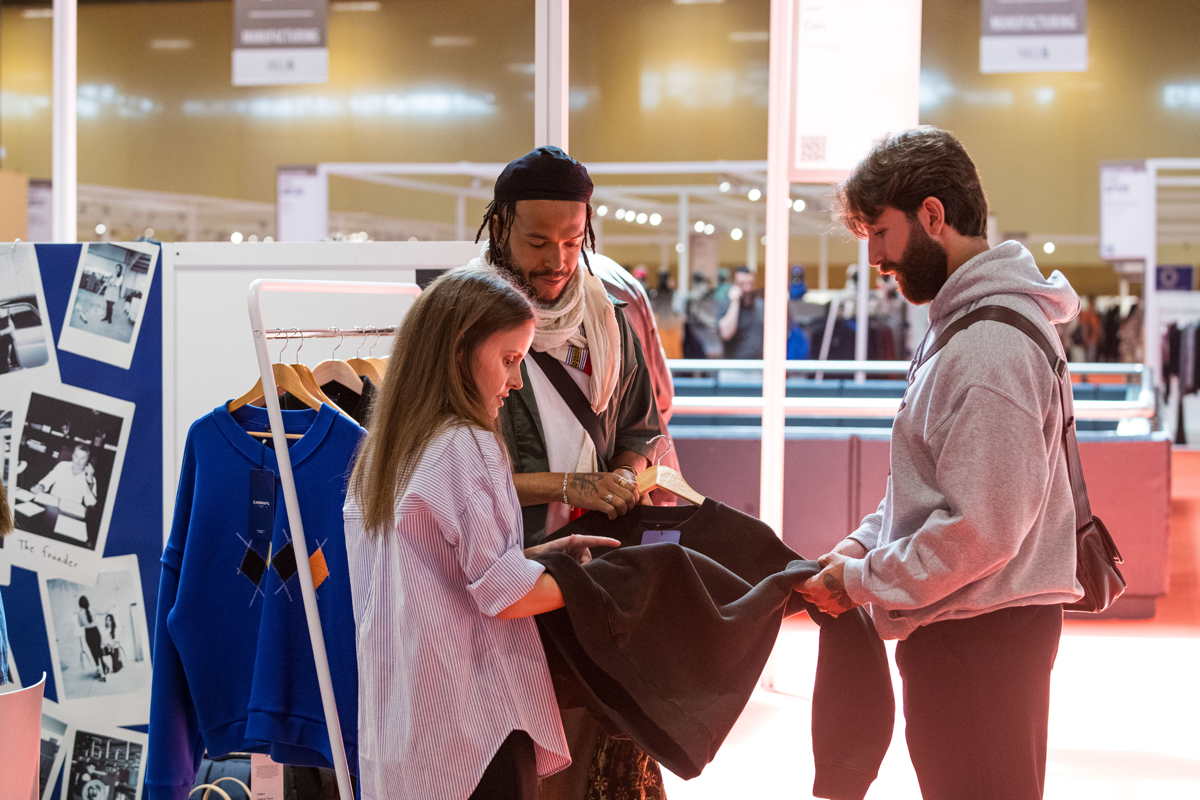
THE PRODUCT LIFE CYCLE
To understand the sustainability of a garment we need to understand the life cycle it undergoes. Première Vision staged the product life cycle to help visitors understand all the areas of the fashion industry that need to be assessed and analysed in order to create a more environmentally responsible industry, seeking a balance between fragility and strength. From the way the fields are irrigated to the end of a garment’s life, at every stage of this life cycle there is an opportunity for improvement.
For instance, Autumn-Winter 24-25 urges us to consider our natural resources more responsibly. How? By demanding product traceability and buying only products with durability, repairability and recyclability at the forefront. The composition of materials is also very important: ecological, responsible, certified, recycled or with processes that have a lower environmental impact are mandatory.
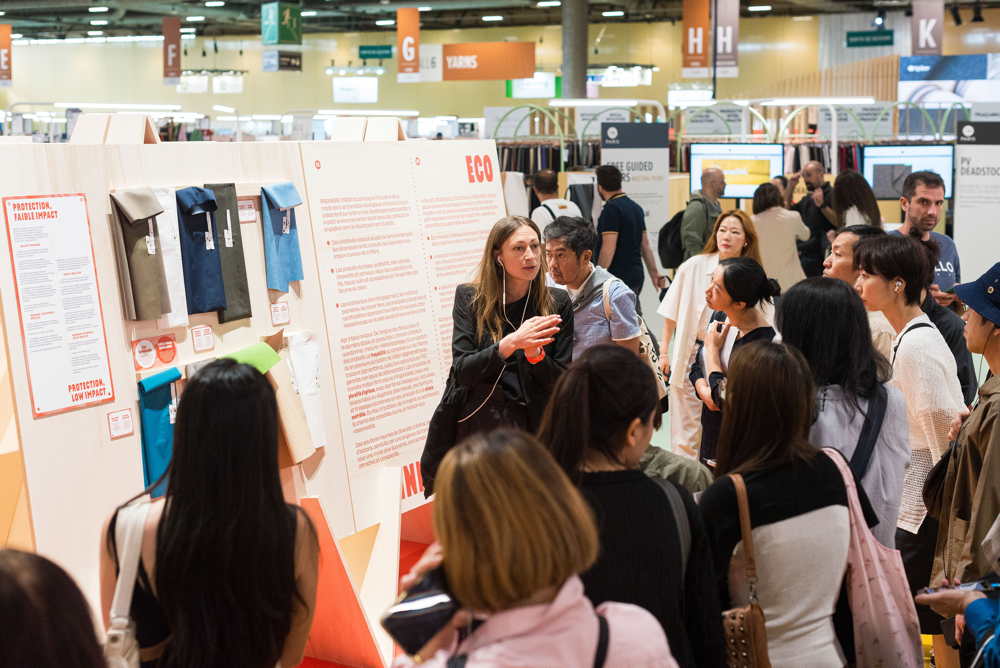
WHERE FASHION IS EVOLVING TO
At a time of such complicated change as the fashion industry is going through today, finding more sustainable textile materials is mandatory. At Première Vision we found new technologies and other not so new ones (we met them during Première Vision January Edition) that are advancing in their development.
- An optimized polyester, developed to ensure accelerated biodegradability.
- Low-impact mixes, like knit with improved biodegradability, combining yak wool, organic cotton, PLA ingeo, formulated from renewable resources.
- Biodegradable performances.
- Polyrethanes, polyesters, polyamides and resins produced from corn starch, castor oil, sugar cane, apple or grape waste, to which various additives are added.
- Agricultural by-products favoured in the production of biopolymers.
- Bio-based finished, reduced chemical impact water-repelents with olive oil finish or finish made from renewable natural resources.
- Many developments highlighting the circular approach to raw materials with the repurposing of textile, agri-food and cosmetics residues.
- Cottonised hemp. A cottonisation procedure aiming to unify the length and diameter of the fibers to ensure homogenous quality without fiber that are too short or too thick. This means that higher percentages of hemp can be used in the compositions, from 20% to 100%.
- Traceable European linens: European Flax guarantees the traceability of premium linens which are GMO-free and irrigation-free. Masters of Linen certifies each stage, from field through yarn (made from European Flax fibers) to fabric.
- The rise of regenerative agriculture developed for cottons, linens or hemps aims to go further than reducing negative impacts by creating a scientifically measured positive impact. Thanks to these practices; we can store carbon in the soil, restore soil fertility, improve water retention and conserve biodiversity.The soil-regeneration techniques include the absence of ploughing and synthetic chemical inputs, as well as the implementation of crop rotation and cover crops, providing more nutrients in the soil.
- Recycled colour. Recycling without overdyeing. Batchesof cotton, cenim or wool are sorted by colour to facilitate their mechanical recycling, dry cleaned and then soaked in order to shred them while clamp. The result is batches that combine their initial colours, avoiding discoloration or overdyein &, ready to be re-spun.
NEW NAMES IN SUSTAINABLE TEXTILE MATERIALS
Far away from Evo, OcenanSafe, we met other new names:
- Sorona is polylactic acid (PLA) developed 37% from renewable resources such as corn or sugar cane.
- Umorfil Beauty Fiber is a cellulose fibre combined with recycled collagen from food waste. It assures accelerated biodegradability, with anti-UV moisture transfer and anti-odor properties, and it is very soft to the touch.
- Amni Eco Soul is a polyamide with improved biodegradability, with breathability properties, softness, and ease of maintenance.
- Plan is a polylactic acid (PLA) developed from sugar cane, chemically recyclable and tested for its accelerated biodegradability.
- Biodegradable elastane like Roica V550 is an innvation designed to decompose more quickly than its conventional equivalents without leaving harmful substances in the environment.
- Crear is an elastane with 30% corn-derived bio-sourced content.
- Climafibre is an artificial fibre with wax particles integrated into the molecular structure of cellulose fibre, with thermal regulation properties.
- Pinayarn is based on the extraction of pineapple leaf fibre, an agricultural waste product, which are spun alone or with banana fibre to bring new natural yarns with resistant properties onto the market.
- Agraloop is using banana, pineapple, hemp or linen residues, using responsible production that recycles water.
- Citrea recovers waste from the peel of oranges grown in Sicily, after the juice or active ingredients have been extracted from the fruit.
- Cork-a-tex is a yarn developed from cork residues mixed with cotton, with hypoallergenic, breathable properties and high resistance to rubbing.
- Milk viscose is made from milk casein, derived from cow’s milk unfit for consumption, with hypoallergenic and antibacterial properties, combining a silky feel with excellent resistance.
- Jufe, also known as “Calcutta hemp” or “Bengal hemp”, is grown in crop rotation and absorbs CO2. It has very good resistance to deformation and excellent dye affinity.
- Nettle is an European plant. Ramie, also known as Chinese nettle, is a white nettle with longer fibre, grown mainly in Asia. They require little water, fertilizer or pesticides, grown quickly and can be harvested up to 5 times a year. European Nettle also absorbs nitrogen to restore the soil.
- Abaca is made from fibre extracted from banana leaves. Its properties combine sheen, strength and lightness. It can be harvested up to 3 times a year.
- Many more…
CONCLUSION
We get the feeling that a lot is changing.
- Recycled fabrics made from plastic bottles are no longer so highly valued. It is not considered necessary (or sustainable) to recycle plastic bottles into fashion, as they could have been turned into new plastic bottles.
- The evolution is to create fabrics from fashion waste or textile waste. This solves one of the main problems of fashion, the huge mountains of waste it generates.
- The use of waste from the food industry in fashion, through the creation of textiles, dyes and even finishes, continues to accelerate.
- The search for plants that grow faster and require less water for the creation of fabrics has a mission: to put an end to the problem of cotton’s high water consumption.
- Vegan fabrics need to change the formula so that they do not require so much plastic in their composition. A composition of 20% plant and 80% plastic does not solve the problem. It could be considered unsustainable in the future.
These are some of the conclusions we had during our private eco-tour with Ariane Bigot, Associate Fashion Director of Première Vision, always teaching us so much about what is really sustainable fashion today.
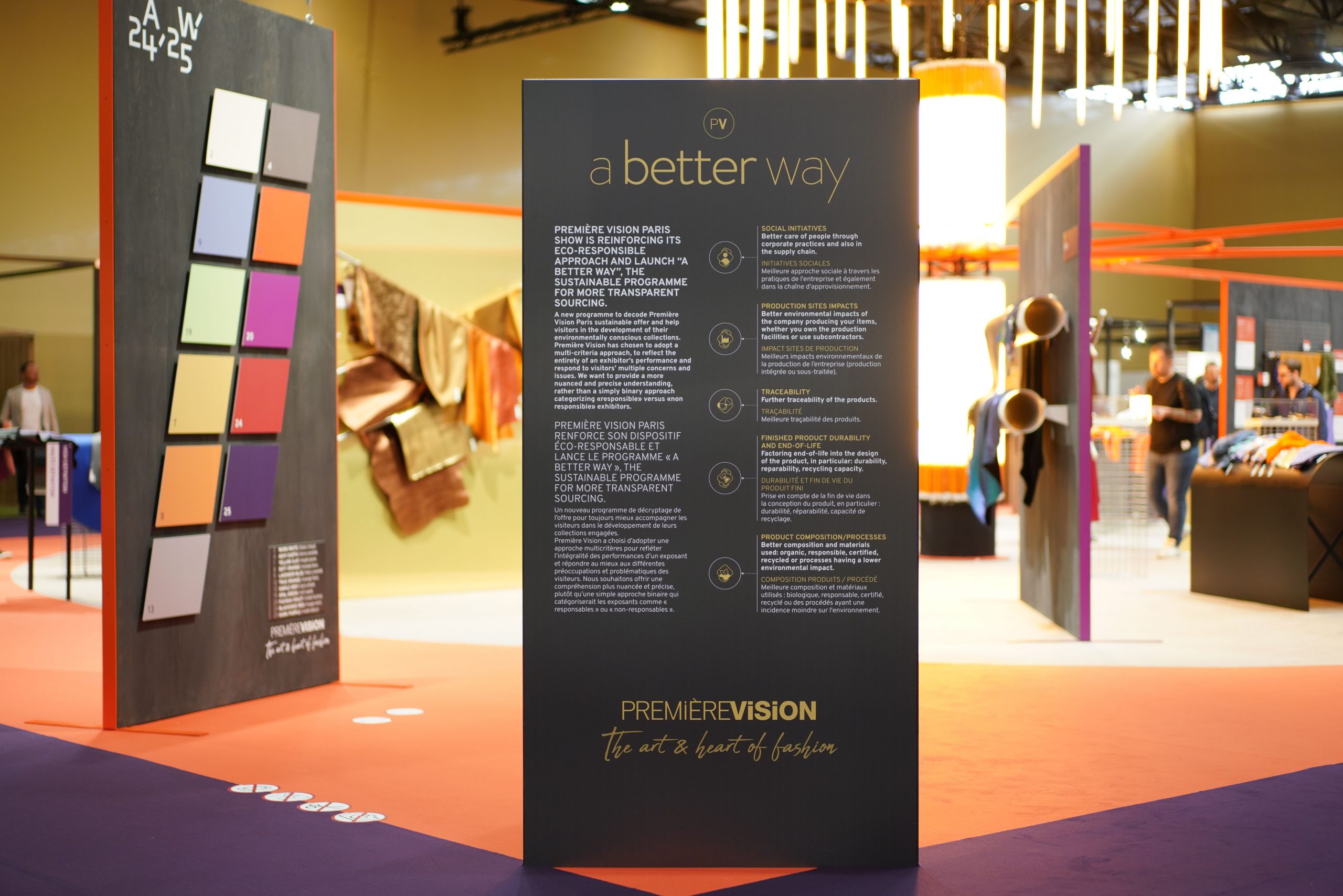
+ All Images: © Courtesy Premiere Vision Paris
+ Words:
Belvis Soler
Luxiders Magazine








